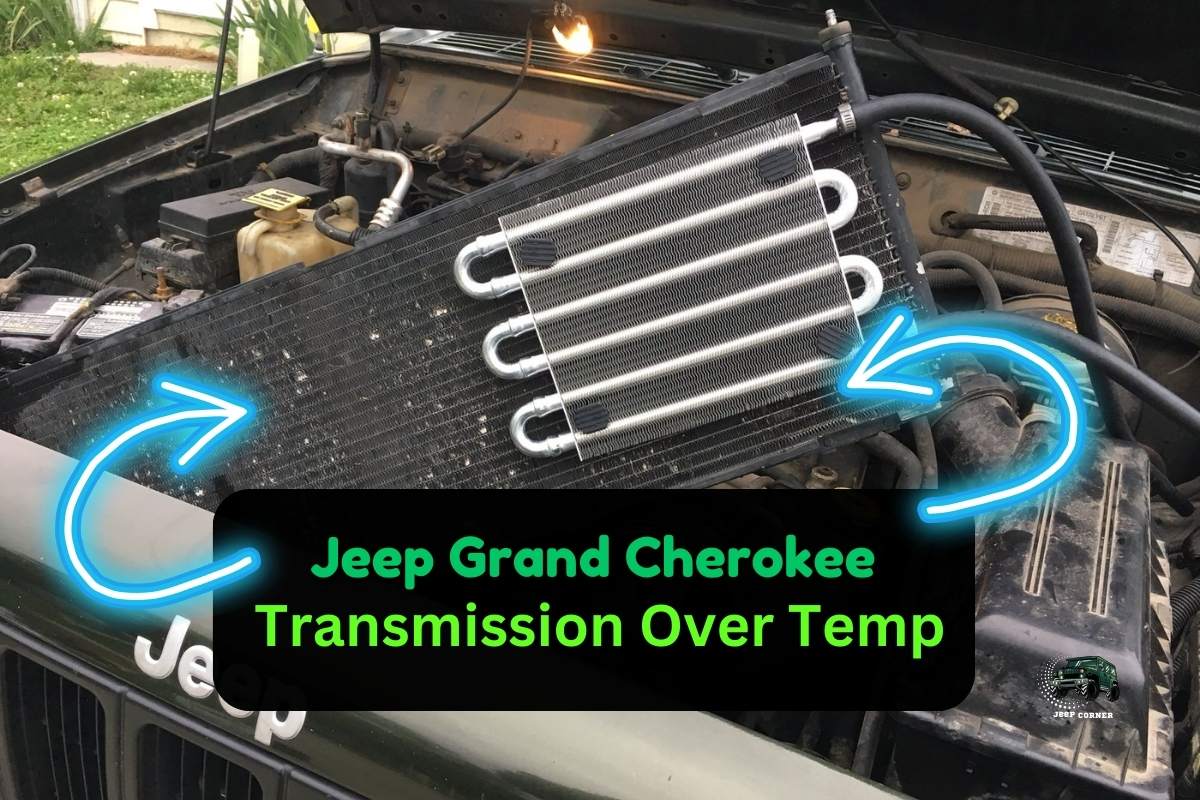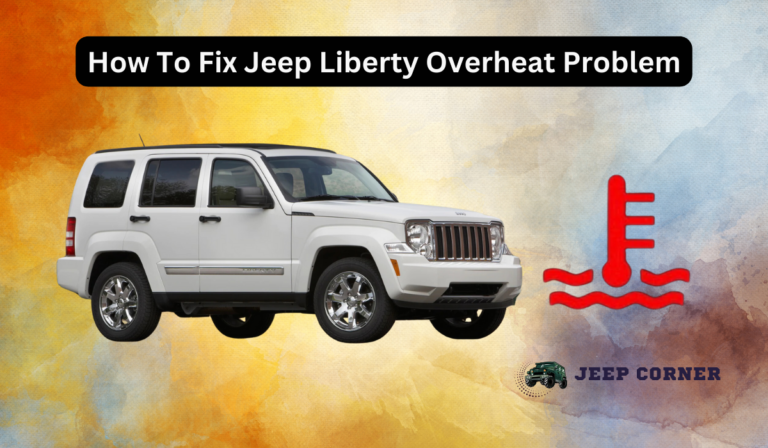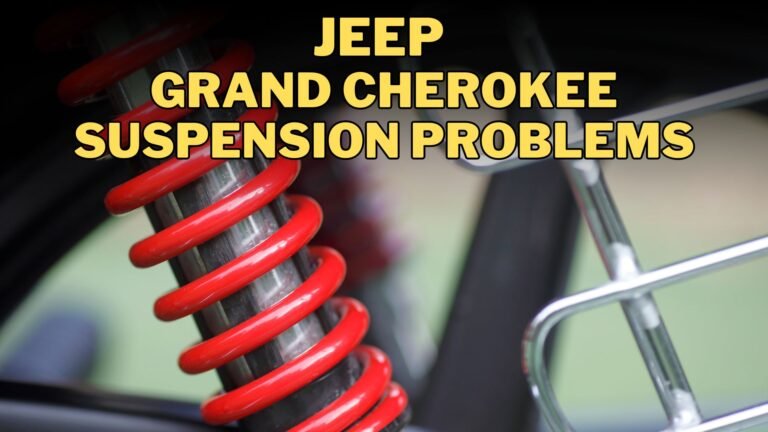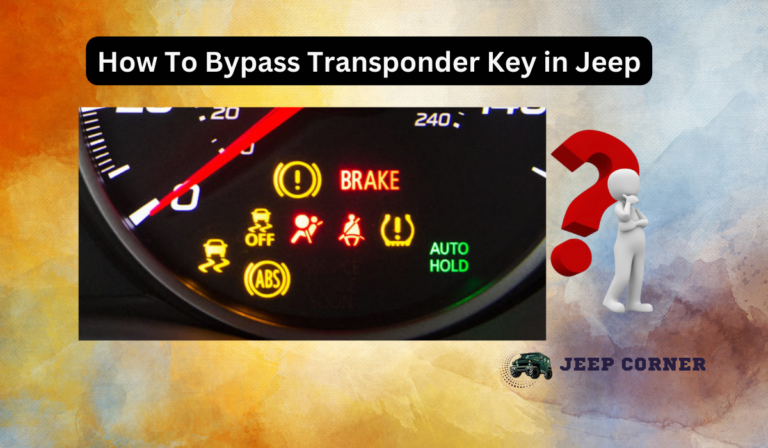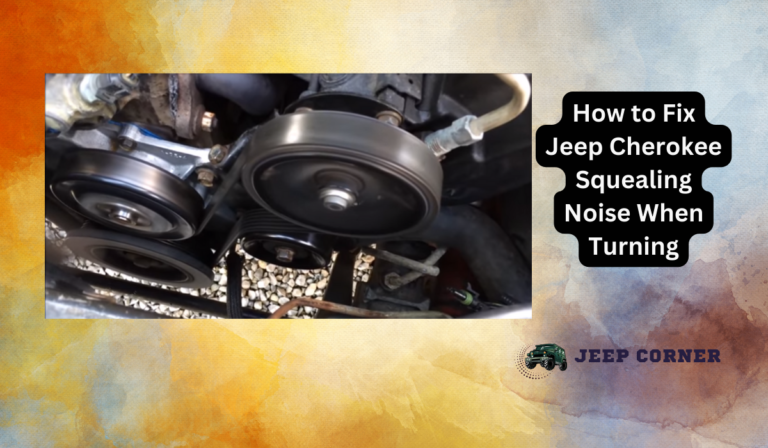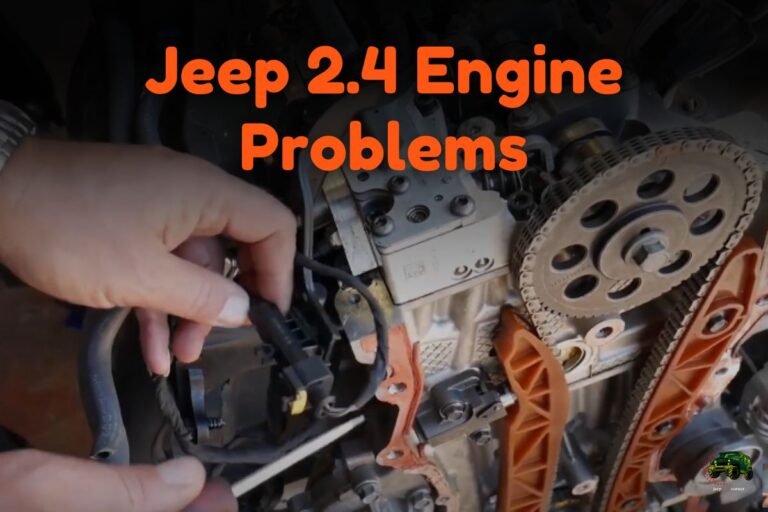Everything You Need To Know About Jeep Grand Cherokee Transmission Over Temp
Jeeps appear less prone to mechanical failure than other cars. Yet, transmission issues are not typical complaints that many of the owners have. If this is not dealt with immediately, it could have disastrous consequences. The Issues aren’t always simple to identify, though.
However, the Jeep Grand Cherokee transmission over temp is not uncommon in various models, especially if you skip scheduled maintenance. Transmission fluid, faulty solenoids, overheating, cooling problems, and faulty temperature indicators are just some of the numerous potential causes.
Therefore, in this article, you will learn what triggers transmission over temp issues in Jeeps, how to recognize them early, and what to do if you experience one.
What Does Transmission Over The Temperature Mean?
Whenever the transmission fluid heat increases to a dangerous level, the transmission over temp light will come on in the instrument cluster. Thus, if your car displays an “over temp” warning for the transmission, it means it’s not getting adequate coolant to function properly.
The transmission temperature warning light will remain on until the vehicle is stopped and the transmission has cooled down. In such a scenario, you must wait for the car to cool down before getting back behind the wheel.
There may be several causes for this. To avoid this in the future, always keep a close watch on your car’s oil and other fluid levels.
Jeep Grand Cherokee Transmission Over Temp (Reasons)
For older Jeeps, transmission overheating is more common than in later ones. If this happens just once, it may be due to something like traffic jams or unusually bad weather. But if it keeps happening, you should seek care immediately away.
However, keep in mind that the optimal transmission temperature is a cool 200 degrees and that every 20 degrees above that reduces the lifetime of the transmission line by half. Below we are going to state the causes behind getting the “transmission over the temperature”
Inadequate transmission fluid
A lack of transmission fluid is a major contributor to the transmission’s overheating. Transmission fluid’s main job is to keep moving parts from rubbing against one another too much. If the fluid level drops too low, increased friction will cause the temperature of the system to rise.
Poor solenoid and excessive towing
If the solenoid is broken, no fluid can enter the transmission, leading to overheating. Another reason is being dragged regularly without the Jeep’s drive wheels touching the ground. It causes the automobile to heat up, which in turn might make the fluid hotter than normal.
Besides, the transmission is prone to overheating if the vehicle is used for excessive towing. Due to this increased demand, the transmission gets hot and starts to fail under the additional weight. So, before you hitch up your Jeep to anything, double-verify its towing capabilities.
Inexperienced driver
This issue may also be brought on by the driver’s poor driving behavior. Transmissions wear out as drivers repeatedly accelerate, halt, and change gears. A higher risk may also be posed by driving in traffic jams or during rush hour in a crowded city.
Signs and Solutions of Transmission Overheating in a Jeep Grand Cherokee
Most gearbox issues in Grand Cherokee are caused by overheating. But if you understand what’s really going on and why these issues crop up, you can eliminate them swiftly and painlessly.
Denotations
Overheating is a regular problem in Jeep Grand Cherokees. Below are the signs of the transmission of overheating
- Numerous warning lights in the engine
- Your car is emitting acrid, nasty fumes that you can smell
- Your car’s fluid has been neglected for a lot longer, and it has begun to heat and turn dark
- Overheating can be traced back to a fluid problem, therefore this is a crucial warning indicator
- There will be obvious lag while changing gears
- When it happens, the transmission will start to slip
To what extent can transmission overheating be avoided?
To keep a vehicle performing at its best, the transmission must be regularly maintained. If you regularly service your Jeep, you won’t have to worry about it overheating.
Here are some easy ways to avoid having your transmission overheat in any climate.
Frequently check the fluid level
Once a month is a bare minimum for checking the transmission fluid in your car. You have to adequately warrant attention before they do irreparable harm to your transmission. If you find issues like limited fuel levels or burnt gasoline early, fix them before they cause transmission damage.
The transmission level can be checked by parking the Jeep on a level surface, pulling the hood release, and opening the hood to reveal the dipstick.
For more information on this, you can clean the tube with a damp cloth. Then insert it back into the transmission and take it out again. Be sure to check the gasoline level using the dipstick and keep it within the lowest and highest marks.
Frequently replacing the fluid
Transmission fluid and filtration changes are recommended every 12 to 18 months and 50,000 miles. However, more frequent transmission fluid changes are necessary if you often drive in extremely high temperatures or tow a lot of weight.
Besides, organic molecules in the fluid degrade with time, turning the fluid into a brownish-black appearance. As the fluid thins, its ability to absorb heat from the engine and other moving parts decreases.
You may change the fluid yourself, or you can hire a professional. After all this wear on the gearbox is slowed down, and the possibility of it overheating is decreased.
Take care of the Jeep’s radiator
It’s a good idea to have a professional periodically inspect the radiator and cooling system to ensure they’re in good working order.
Additionally, every two years you should swap out the coolant in the radiator. As a result, the temperature of the transmission system will be reduced.
Put place a Fan/AC outside
Jeep drivers typically enjoy exploring new landscapes and towing heavy cargo. When going on or down mountains or slopes, this puts extra strain on the transmission. Perhaps the car won’t get cold enough if you just use the radiator.
In this case, a transmission cooler should be installed outside to address this issue. If it’s not an emergency, put the car in neutral.
You can simply put the automobile in neutral if you need to come to a complete halt for a short period. Do this while waiting at a red light or in heavy traffic to reduce heat and stress on the transmission.
How Can You Fast Lower The Temperature Of A Transmission?
According to our study, we can say that without a skilled mechanic’s check, cooling down the transmission quickly is not possible. Therefore, it will be best to take your car to a technician if you are in a hurry.
The first step is to choose a safer area to place your vehicle when the Jeep flashes its warning light. Turn off the car’s ignition and let it cool down. Time frame: approximately two hours.
Signs, such as unusual noises, can be noted at that time as well. The issue can be more quickly identified with its aid. On top of that, don’t drive through the red light either. Drive it to an auto repair shop as safely as possible so the problem may be addressed.
FAQs
Are you in search of additional questions about this topic? If yes, this FAQ section is the right one for you.
Why does my Grand Cherokee’s transmission overheat?
Increases in transmission temperature could indicate a problem with the transmission fluid or filter in your car.
Failure of bearings, broken gears, slipping transmission bands, ruptured seals, delayed clutch engagement, and inoperative solenoids, are just some of the transmission issues that might arise when the transmission heat increases above its safe operating range.
How to cool the transmission overheating?
Utilization of transmission fluid additives regularly is a tried and true method of repair. These fluid supplements contain coolants designed to reduce transmission temperature. This is especially important when your transmission is working hard due to heavy loads, steep grades, or frequent stops.
Conclusion
Jeep Grand Cherokee transmission over temp can be a great problem for people who have no prior knowledge about it. It’s the absolute worst-case scenario for a Cherokee owner. Carbon deposits on essential auto parts can halt their functionality when exposed to high temperatures.
Therefore, preventative car care is essential. You also need to know what causes the issues and how to fix them. If you see any of the aforementioned issues, it’s time to take your car in for a thorough inspection.

